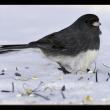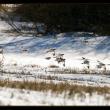The real snowbirds
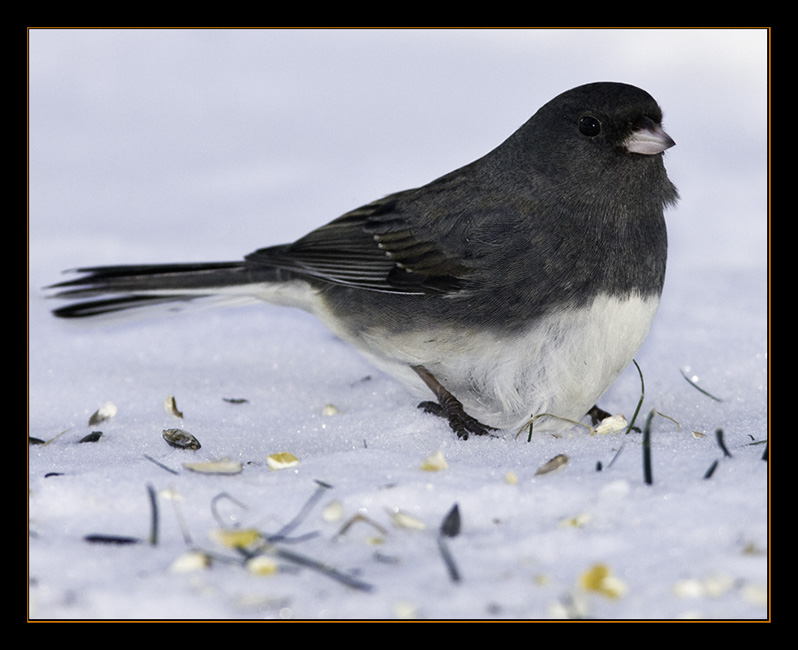 Dark-eyed Junco, another species of "snow bird," enjoying a snack on the ground under a feeder. Below: Snow Buntings, the famed "snow birds," in flight in an agricultural field in winter. Courtesy Kirk Rogers
Dark-eyed Junco, another species of "snow bird," enjoying a snack on the ground under a feeder. Below: Snow Buntings, the famed "snow birds," in flight in an agricultural field in winter. Courtesy Kirk Rogers
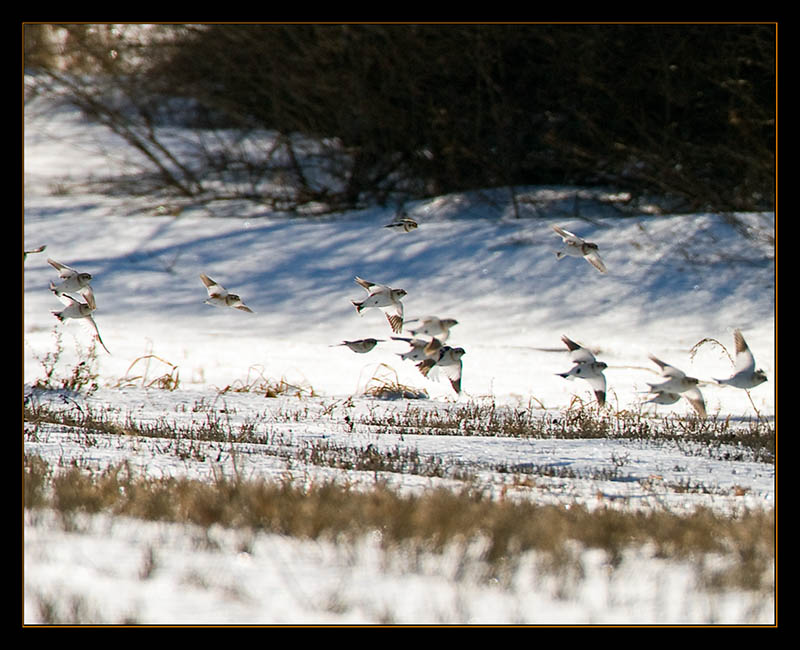 Snow Buntings, the famed "snow birds," in flight in an agricultural field in winter. Courtesy Kirk Rogers
Snow Buntings, the famed "snow birds," in flight in an agricultural field in winter. Courtesy Kirk Rogers
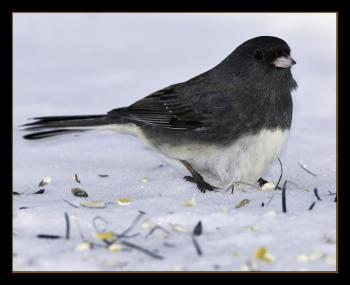 Dark-eyed Junco, another species of "snow bird," enjoying a snack on the ground under a feeder. Below: Snow Buntings, the famed "snow birds," in flight in an agricultural field in winter. Courtesy Kirk Rogers
Dark-eyed Junco, another species of "snow bird," enjoying a snack on the ground under a feeder. Below: Snow Buntings, the famed "snow birds," in flight in an agricultural field in winter. Courtesy Kirk Rogers
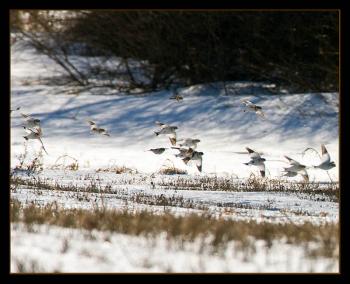 Snow Buntings, the famed "snow birds," in flight in an agricultural field in winter. Courtesy Kirk Rogers
Snow Buntings, the famed "snow birds," in flight in an agricultural field in winter. Courtesy Kirk Rogers
Long before there were caravans of retiree-piloted RVs traveling south every fall to spend the winter in Florida, there was another definition of the term “snowbird.”
Back when few people had the option of flying away from their winter territories, the arrival of birds from farther north was a clear sign cold weather was coming and snow was not far behind.
We first heard the term “snowbirds” used by observant but non-birding older friends and relatives to mean snow buntings: small, sparrow-sized birds that nest on the ground in Arctic environments.
As they make their way south, snow buntings arrive in Maine in the autumn in late October and November. They are often in small flocks, usually no more than 5-10 birds and are typically seen foraging for seeds along the shores of lakes, beaches, and other open areas.
As winter progresses, though, they amass into larger and larger flocks. Sometimes these flocks, which can eventually reach hundreds of birds, congregate around agricultural fields, particularly those where farmers are spreading manure, often in late winter and early spring.
To find them, look for an agricultural field. If you’re close enough, roll down the window and let scent of “fresh dressing,” as the old Mainers like to say, fill your senses.
Then set up a scope (on your car window, if there’s a nip in the air) and scan for what looks like a scattering of white leaves whirl up into the air. With your eye, wait for them to settle back down, then aim your binoculars or telescope on them.
You will be delighted by their bubbly little hops and skips as they pick through the manure for seeds that have been excreted by the farm animals (not a glamorous meal, especially considering what handsome birds snow buntings are).
Snow buntings aren’t the only “snow birds,” though. Many old timers refer to dark-eyed juncos as the “snow bird.”
These striking little sparrows with distinctive, pinkish bills are most commonly seen in Maine during the winter, returning to our feeders like beloved friends in their neatly pressed slate gray-and-white suits.
Although a common breeder in Maine, they aren’t so easily observed during the summer months, staying close to wooded areas. Even larger numbers nest in the vast boreal forests of Canada, from where tens of millions descend into the U.S. for the winter.
When they arrive, dark-eyed juncos feed busily along roadsides and on the ground under feeders, flashing white on the sides of the tail when they take flight. For most Mainers, the arrival of the juncos is a sure sign that winter is on the way.
And for the “snow birds” of the human variety, that means it’s time to pack up their “nest” and head to warmer climes, returning in spring with the ducks and geese – right around the time the snow buntings and dark-eyed juncos are started to head back north.
Dr. Jeff Wells is the senior scientist for the Boreal Songbird Initiative. During his time at the famed Cornell Lab of Ornithology and as the Audubon Society's national bird conservation director, Dr. Wells earned a reputation as one of the nation's leading bird experts and conservation biologists. Jeff's grandfather, the late John Chase, was a columnist for the Boothbay Register for many years. Allison Childs Wells, also formerly of the Cornell Lab of Ornithology, is a widely published natural history writer and a senior director at the Natural Resources Council of Maine. Together, they have been writing and teaching people about birds for decades. The Maine natives are authors of the highly acclaimed book, “Maine's Favorite Birds.”
Event Date
Address
United States



